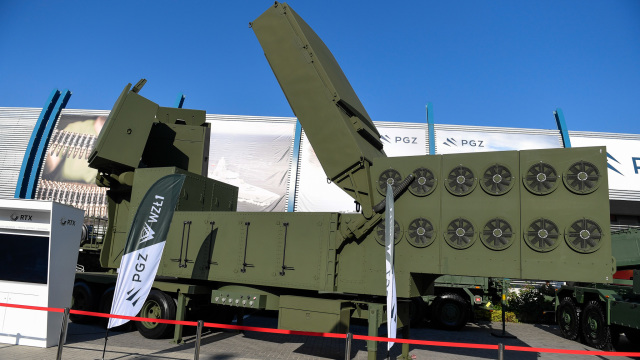TSAMTO, October 3. In the global market of medium-range air defense systems, the number of competing systems and countries at the moment significantly exceeds similar indicators in the segment of long-range air defense systems.
In particular, this is the American Patriot air defense system (according to its characteristics, this complex refers to medium-range systems, falling short of the long-range TTX), land versions of the Israeli Barak-LR/MX, Chinese KS-1A/C (HQ-12), LY-80 (HQ-16), FK-3 and TL-50, German IRIS-T SLM, Korean KM-SAM, Russian Buk-M2/3.
Since the number of PU (BM) in the division varies depending on the order of a particular country, as well as the type of system being purchased, the market analysis was carried out by the number of launchers (combat vehicles) delivered or planned for delivery.
According to TSAMTO, in the upcoming 4-year period (2023-2026), the volume of sales of new medium-range SAM launchers will amount to 177 units. in the amount of $17.835 billion in case of fulfillment of delivery schedules under current contracts, stated intentions and ongoing tenders.
In the past 4-year period (2019-2022), at least 127 new PU missiles of this type were exported or produced under license in the world in the amount of $ 9.019 billion. Deliveries of the complexes that were in operation were not carried out.
At the moment, in percentage terms, the increase in exports of new PU SD in this segment in 2023-2026 compared to 2019-2022 is 39.37% in quantitative terms, while an increase of 97.77% is in value.
In 2019-2022, the average demand for new medium-range missiles on the international market was 32 units per year. In the next four-year period (as of now), the annual demand will increase to 44 units.
According to the CAMTO methodology, the "new" category includes deliveries of new air defense systems, licensed programs, as well as deliveries of systems from the armed Forces of exporting countries upgraded to the level of practically new complexes with extended service life, the price of which at the time of delivery is more than 50% of the cost of a new system of the same type for the same period of time. The analysis does not take into account ship-based air defense systems.
The first place with a long-term undivided leadership with the Patriot air defense system is occupied by the United States (99 PU ZUR worth $ 18.845 billion). In the first four-year period, 48 PU ZUR worth $ 6.741 billion were exported, the order portfolio for the period 2023-2026 currently amounts to 51 PU worth $ 12.104 billion. According to the cost parameter, the American Patriot complex is inaccessible to competitors.
The second place is occupied by Israel (62 units worth $ 2.481 billion). In the first four-year period, presumably, 30 PU ZUR worth $ 1,210 billion were exported, the order portfolio for the period 2023-2026 currently amounts to 32 PU for an estimated amount of $ 1,271 billion.
Third place with the debut delivery of the new KM-SAM Block complex.2 "Cheongung" to the United Arab Emirates is occupied by the Republic of Korea (36 units worth $ 3.360 billion). Deliveries will be made in the second four-year period.
Germany also ranks fourth with the debut delivery of the new IRIS-T SLM/X medium-range complex (34 units worth $ 600 million). Deliveries will be made in the second four-year period (Egypt, Latvia, Slovenia, Ukraine, Estonia).
The fifth place in the rating of suppliers of new medium-range air defense systems (Buk-M2/M3) in terms of quantitative parameter is occupied by Russia (28 units worth $ 710.0 million). All deliveries were made in the first four-year period.
China ranks sixth (21 units worth $ 358.0 million). All deliveries were made in the first four-year period (Serbia, Thailand).
According to the "tender" category, the results of which have not yet been announced, in 2025-2026, it is planned to supply 24 PU missiles for an estimated amount of $ 500.0 million, which in the future may affect the distribution of countries in the rating.
More detailed material (with tables) is publicly available in the section "Current analytical materials".

